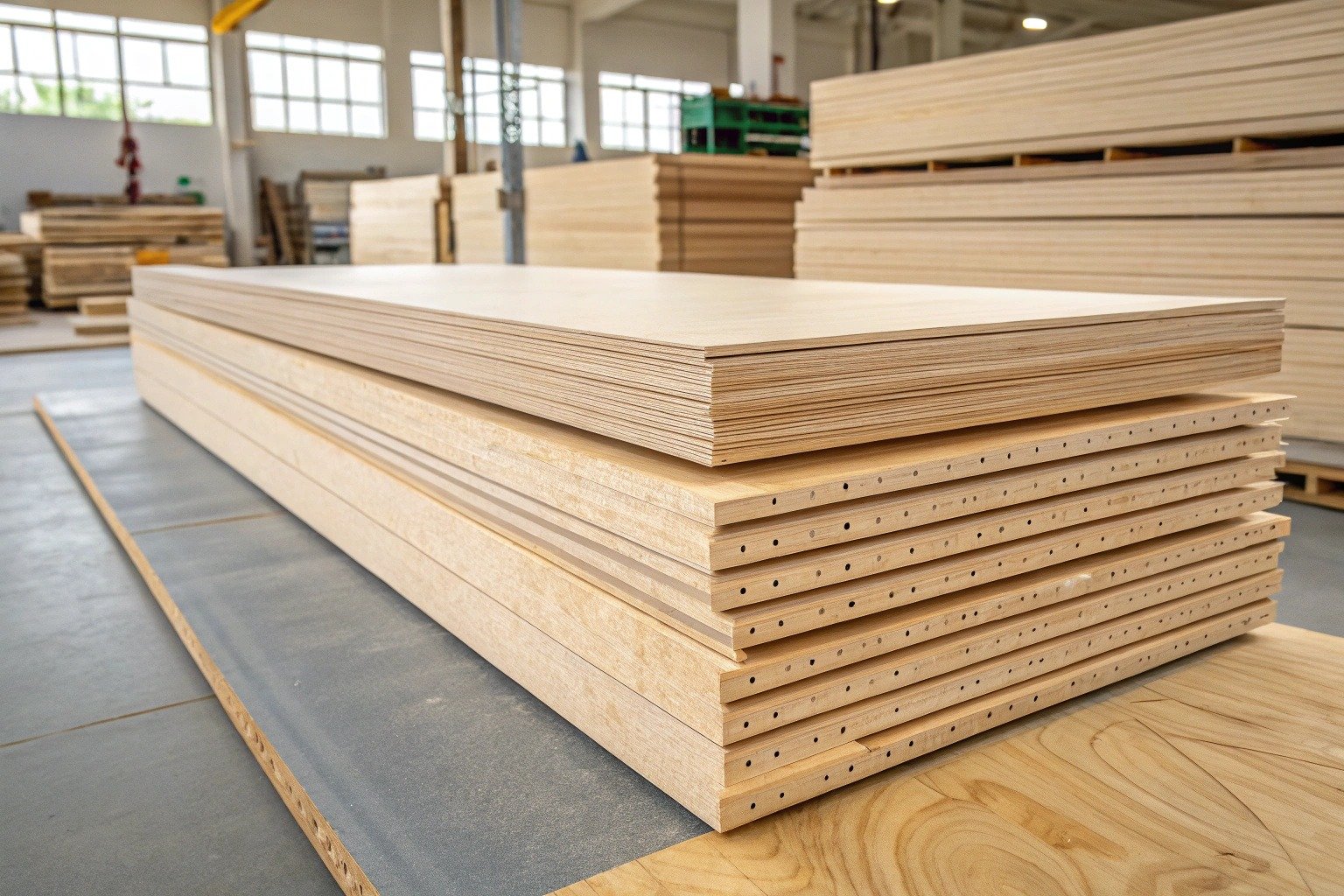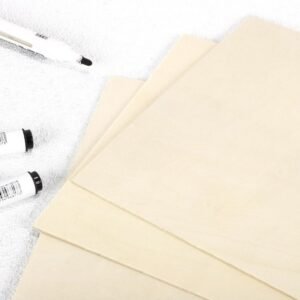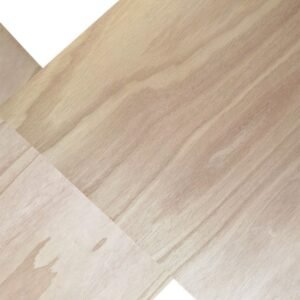Plywood is one of the most versatile and widely used engineered wood products in the global market. Whether you’re building furniture, cabinets, wall panels, or industrial packaging, chances are plywood is part of the structure—even if it’s hidden underneath a veneer or paint. But what exactly is plywood, and how do you choose the right type for your project or product line?
Plywood is made by gluing thin layers of wood veneer together with alternating grain directions, creating a strong, stable, and flexible sheet. Its performance depends heavily on the core wood species, glue type, number of layers, surface finish, and grading standards.
As a sourcing company and manufacturer with deep experience in plywood production, we supply a wide range of plywood types—including poplar, linden, beech, birch, paulownia, and pine—to clients in the furniture, construction, and interior decoration sectors. In this guide, I’ll explain how plywood is made, what grades matter, and how to select the right plywood based on your end use.
How Is Plywood Made?

The process starts with selecting the logs. Each log is peeled into thin sheets called veneers. These veneers are then dried, sorted, and glued together in layers—each one rotated 90 degrees to the previous to improve dimensional stability. The layered panel is then pressed under heat and pressure, trimmed, sanded, and, in some cases, surface-treated.
The number of layers, type of core, glue type (MR, WBP, E0/E1/E2 formaldehyde levels), and face/back veneer species all affect the plywood’s strength, appearance, water resistance, and price.
We’ve helped clients customize plywood thicknesses from 3mm to 25mm, with core-to-core variations depending on application—from furniture-grade to structural-grade panels. Factories in North China often specialize in poplar and paulownia cores, while birch plywood is mainly produced in the Northeast due to raw material access.
👉 Learn more about our MDF and Plywood Manufacturing Process for a deeper look into how each stage impacts quality and performance.
Common Types of Plywood by Wood Species
Different plywood types are made by using different wood species as the core and/or surface veneer. Each has its own characteristics, pros, and typical applications. If you’re looking for specific material options, you can explore our full plywood range here.
Poplar Plywood

Poplar plywood is lightweight, easy to work with, and widely used in furniture backing, cabinet interiors, and decorative wall panels. It’s cost-effective and offers a decent strength-to-weight ratio.
We often recommend poplar plywood for clients producing modular furniture kits or export-grade shelves where weight and price are both critical.
Linden Plywood

Linden (also called basswood) is known for its fine, smooth grain and easy machinability. It’s often used for interior panels, musical instruments, and lightweight furniture.
Our customers in Korea and Japan love linden plywood for its clean finish, especially when paired with clear lacquers or UV coatings.
Beech Plywood

Beech is a hardwood known for its density and strength. Beech plywood is heavier but offers excellent durability. It’s often used in high-load furniture parts, flooring substrates, and bentwood applications.
We typically suggest beech-core or beech-faced plywood when the client needs impact resistance or is creating a visible surface with high-end finishes.
Birch Plywood

Birch plywood is considered one of the highest-quality plywoods due to its fine grain, strength, and dimensional stability. It’s a top choice in Europe for cabinetry, structural elements, and premium furniture.
Many of our clients selling to Scandinavian markets request BB/BB or B/BB grade birch plywood, produced under strict EU formaldehyde emission standards (E0 or CARB P2). Birch’s screw-holding ability and uniformity also make it ideal for CNC machining.
Paulownia Plywood

Paulownia is incredibly lightweight—almost half the weight of beech—making it perfect for ultralight furniture, RV interiors, or floating wall shelves. It also has good dimensional stability and resists warping.
We’ve helped Australian and Korean clients use paulownia plywood in ready-to-assemble furniture lines that require light shipping weight without compromising panel thickness.
Pine Plywood

Pine is a softwood with good structural strength and is often used in construction, packaging, or subflooring. Pine plywood is slightly heavier than poplar but more durable.
In projects where aesthetics matter less than mechanical strength—like crates, shelves, or underlayment—pine offers great value. We’ve also supplied pine-faced plywood with WBP glue for outdoor uses.
Plywood Grades: What Do They Mean?
Plywood grades vary by country, but in general, grades refer to the quality of the face and back veneers:
- A-grade: Smooth, virtually defect-free, ideal for clear finishes
- B-grade: Minor defects, still suitable for paint or laminate
- C/D-grade: Larger knots, visible repairs, structural or hidden use
In the U.S., you’ll often see labels like A-C or B-B. In European and Chinese standards, you’ll encounter BB/CC, B/BB, or CP/C.
The core also matters. A high-grade face with a poor core won’t last. Always ask your supplier about core construction (full piece vs finger-jointed), void count, and glue type.
Best Uses by Plywood Type

Depending on your project or product line, different plywoods will offer different benefits.
| Plywood Type | Best For |
|---|---|
| Poplar | Furniture carcasses, drawers, interior panels |
| Linden | Decorative panels, laser cutting, accessories |
| Beech | Load-bearing furniture, flooring, tool jigs |
| Birch | High-end furniture, cabinetry, CNC processing |
| Paulownia | Lightweight shelving, RV interiors, packing |
| Pine | Construction, crates, outdoor subflooring |
For example, if you’re exporting knock-down furniture, poplar or paulownia helps reduce weight and shipping cost. For visible cabinet fronts or display fixtures, birch or linden gives better finish and elegance. If the panel is structural or exposed to wear, beech is your friend.
Sourcing Plywood: What to Ask Your Supplier
Before placing your order, clarify the following:
- What is the glue type (E0, E1, MR, WBP)?
- What face/back veneer species are used?
- Is the core full-piece, finger-jointed, or mixed?
- What is the actual thickness tolerance (± mm)?
- Is the surface sanded or raw?
- Can the supplier meet CARB, FSC, or CE certification?
We’ve helped clients avoid costly errors by clarifying these specs early. In one case, a client ordered birch-faced plywood assuming it was full birch core—but received a poplar-core product. After that, we helped them update their spec sheet and conduct pre-shipment inspections every time.
Conclusion
Plywood may look simple, but getting it right requires understanding your application, selecting the right wood species, and working with a supplier who can deliver consistent quality. Whether you’re building home furniture, designing cabinets, or sourcing bulk panels for projects, choosing the right plywood can make or break the final product.
We offer a wide range of plywood panels—poplar, linden, beech, birch, paulownia, and pine—customized to your dimensions, glue standards, and finish requirements.
👉 Browse our plywood product line here
👉 Talk to our sourcing team — we’ll help you find the right panel for the right project, every time.
